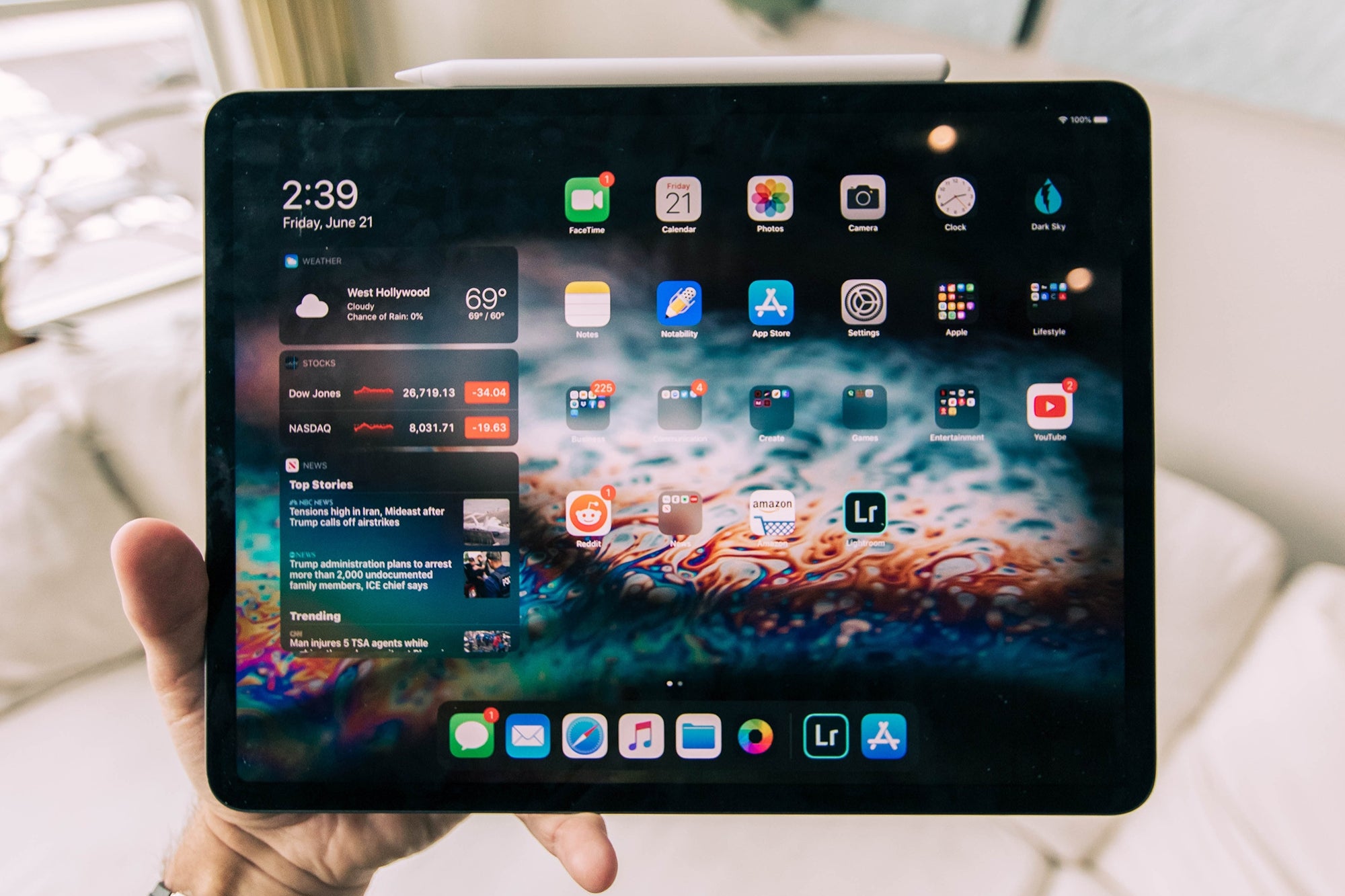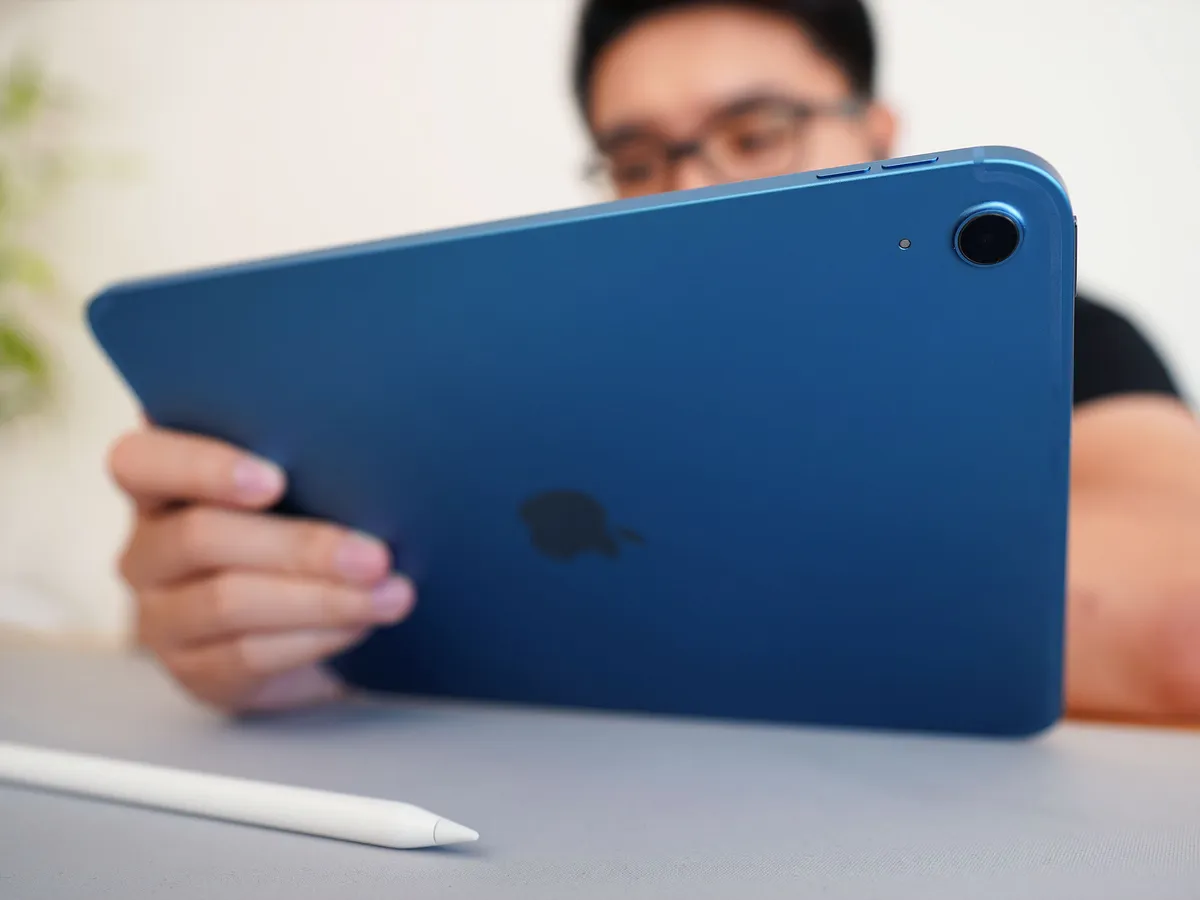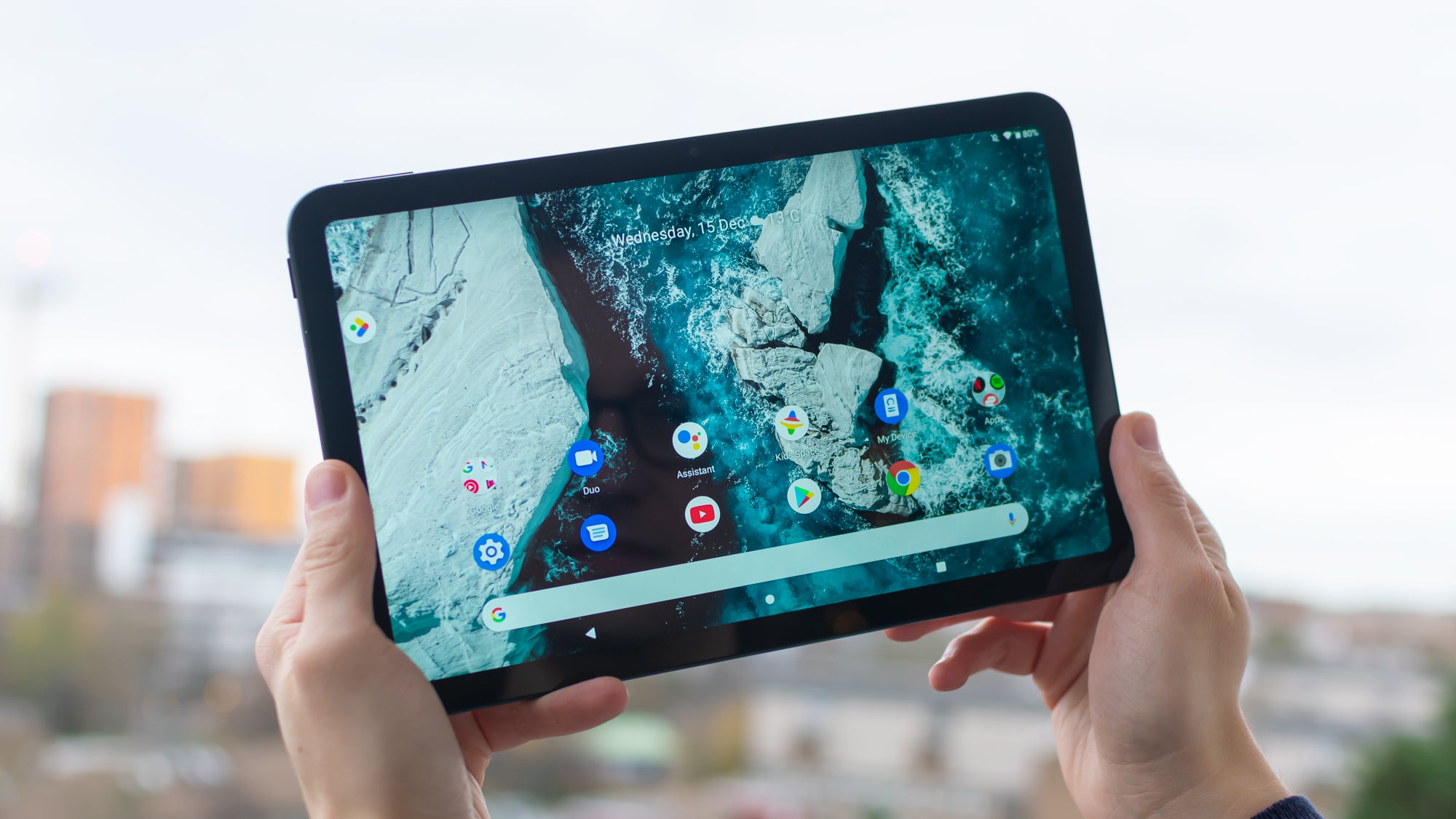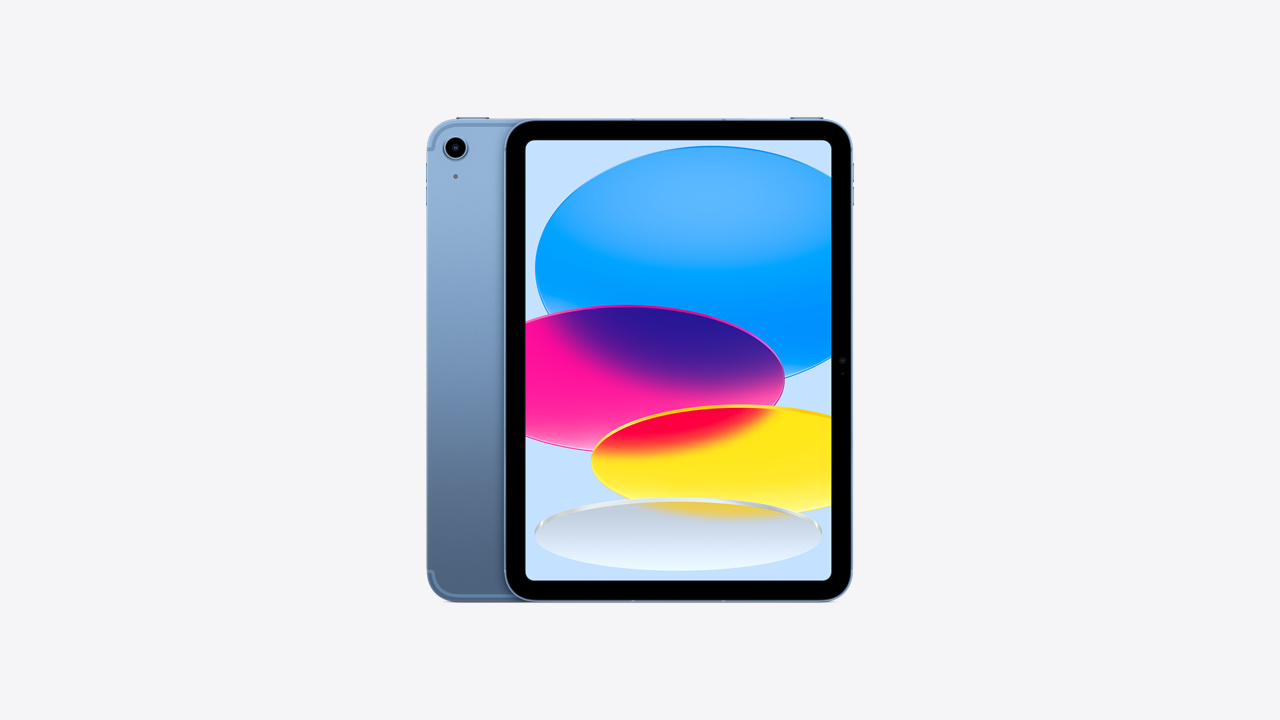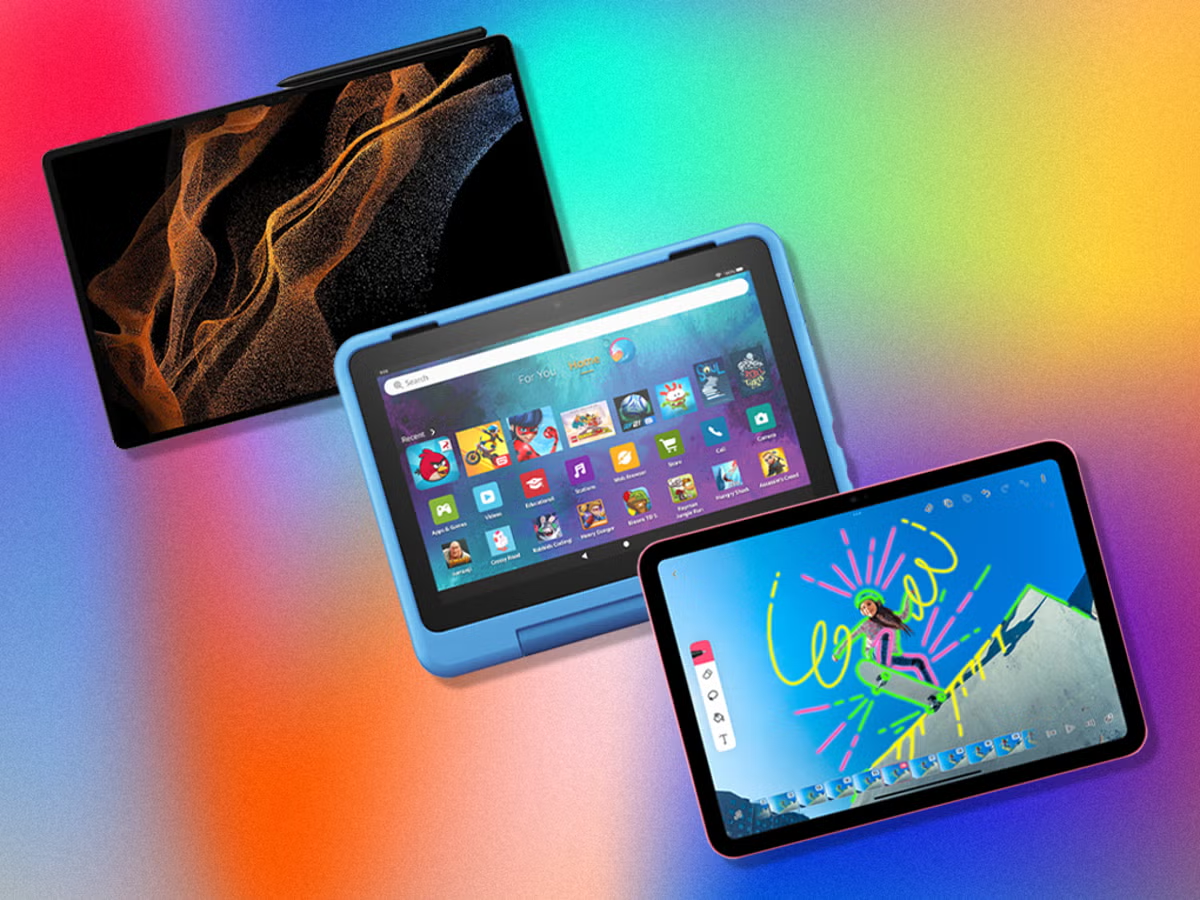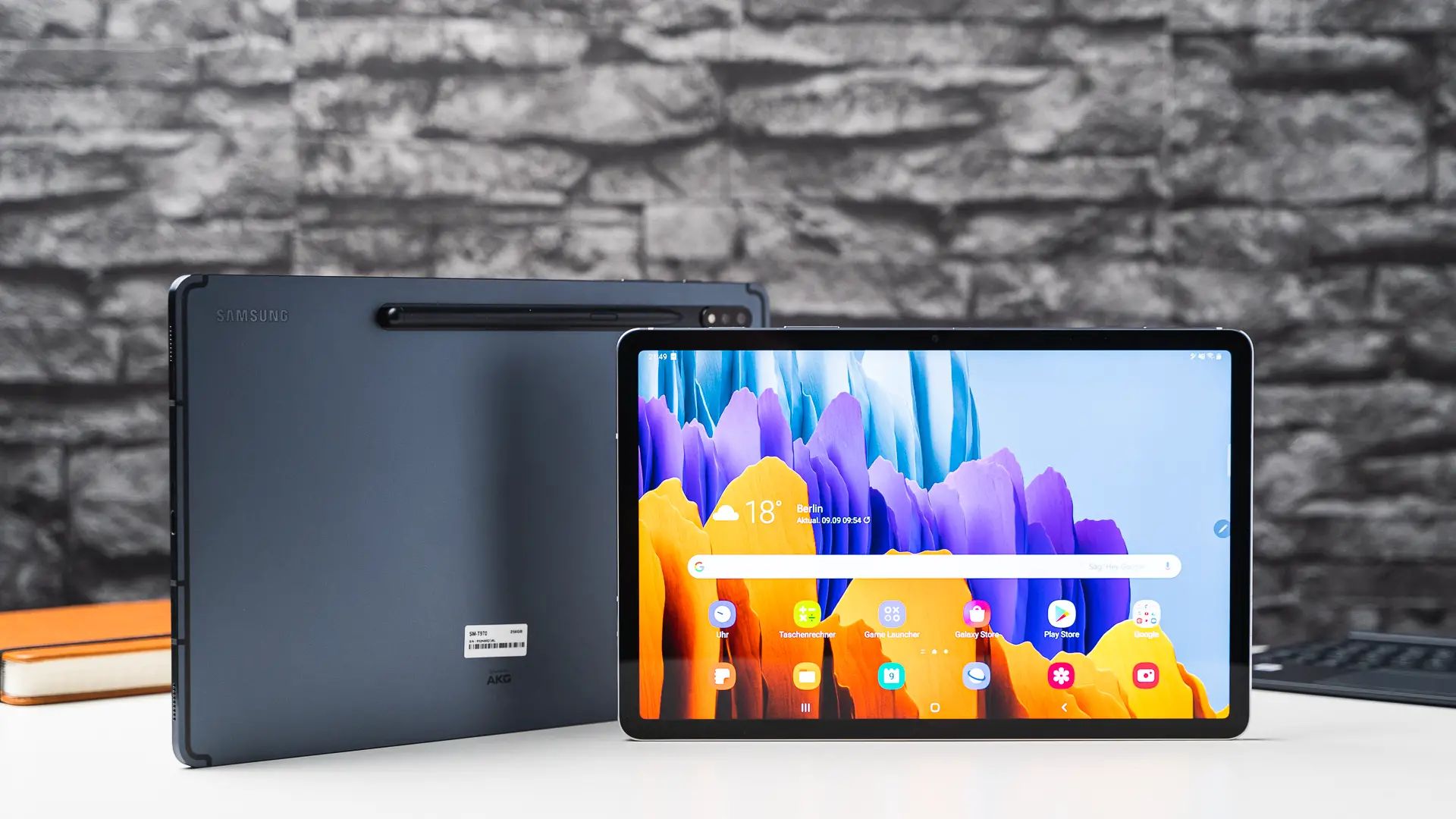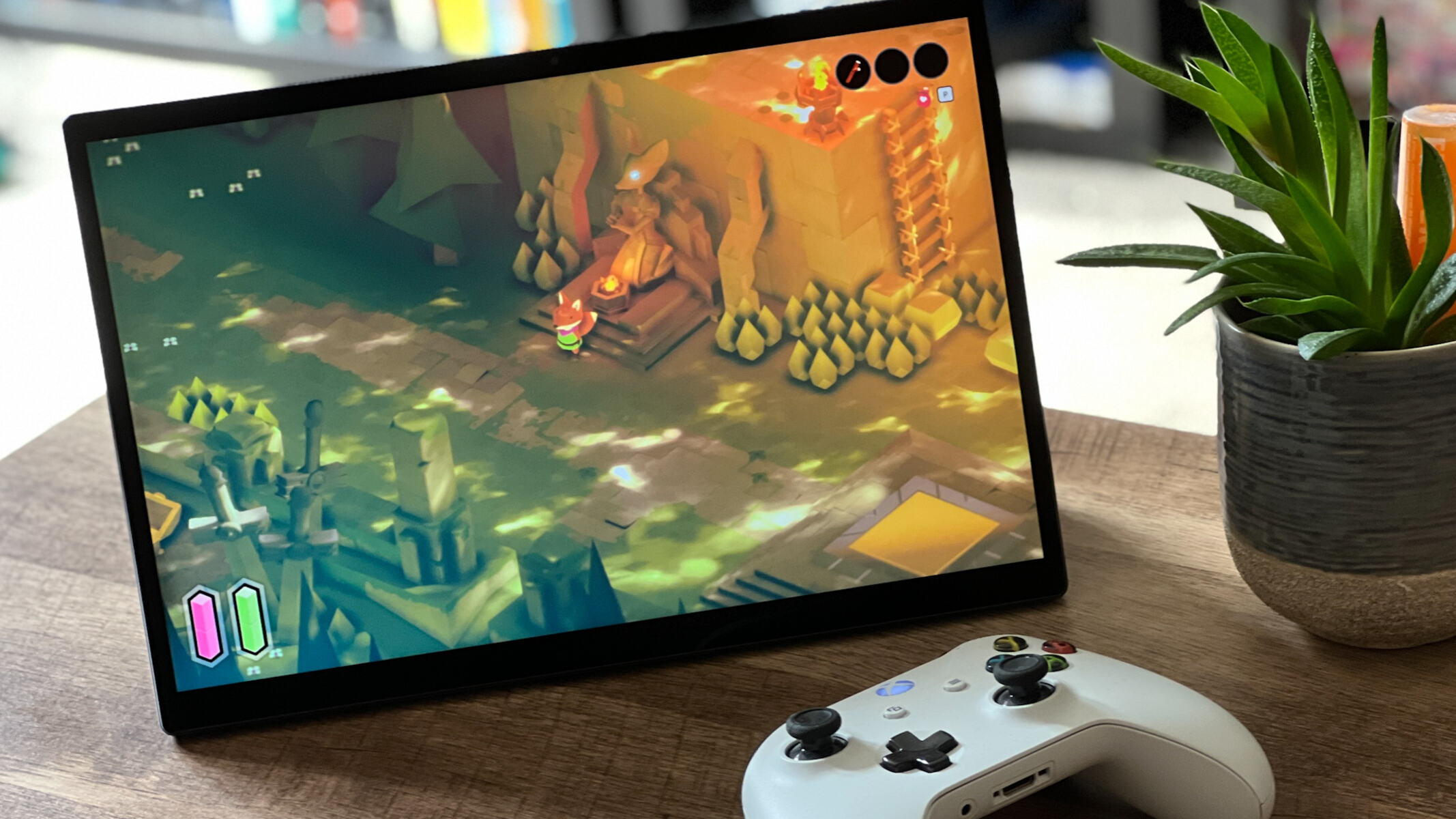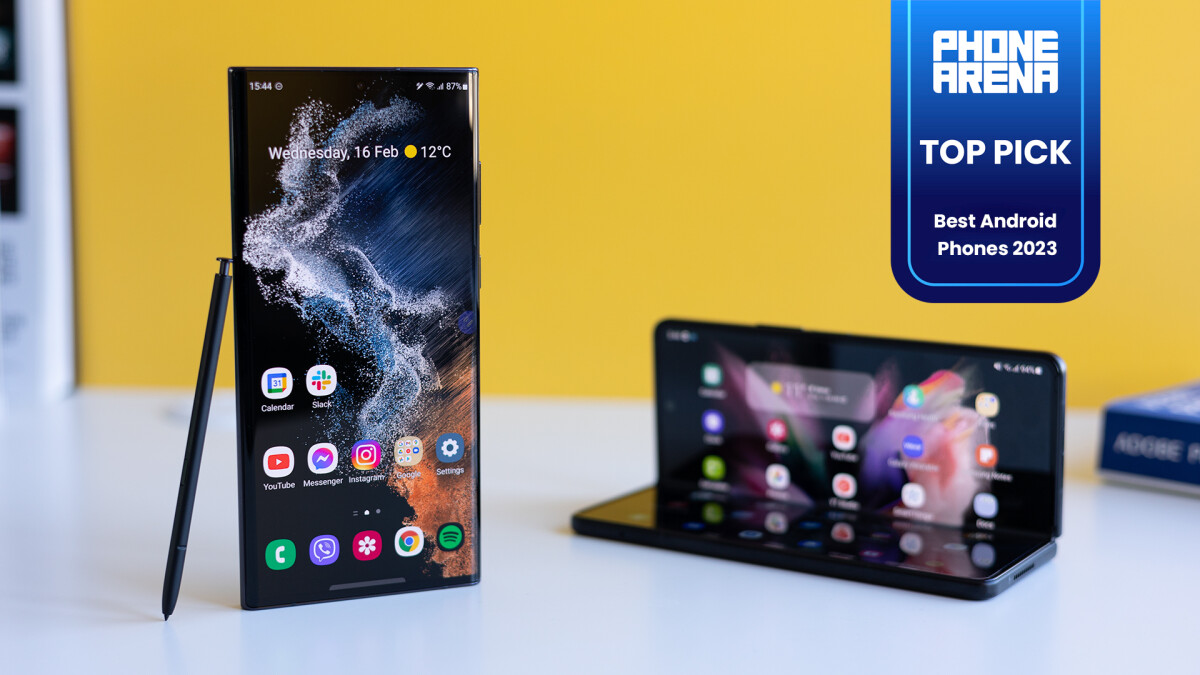Introduction
Welcome to the era of connectivity, where the internet has become an indispensable part of our daily lives. From staying connected with loved ones to conducting business and accessing information, the internet has revolutionized the way we live and work. In this digital age, devices like tablets have become incredibly popular due to their portability and versatility.
When considering purchasing a tablet, you may have come across the term “Wi-Fi only.” But what exactly does this mean? In simple terms, a Wi-Fi only tablet is a device that can only connect to the internet through a Wi-Fi network. Unlike cellular tablets, which can also connect using a cellular data network, Wi-Fi only tablets rely solely on Wi-Fi hotspots for internet access.
In this article, we will take a closer look at what it means to have a Wi-Fi only tablet, discuss the benefits and limitations of these devices, compare them to cellular tablets, and provide tips on how to maximize Wi-Fi performance on your tablet.
Whether you’re a tech enthusiast, a student, or a professional on the go, understanding the significance of Wi-Fi only tablets will help you make an informed decision when choosing the right device to meet your needs.
What is a Wi-Fi Only Tablet?
A Wi-Fi only tablet is a device that can only connect to the internet through a Wi-Fi network. Unlike cellular tablets that come with built-in cellular connectivity, Wi-Fi only tablets rely on Wi-Fi hotspots to access the internet. These hotspots can be found in homes, offices, cafes, airports, and other public places where Wi-Fi networks are available.
Wi-Fi only tablets are designed to be lightweight and portable, making them convenient for on-the-go use. They offer a range of features and functions that make them suitable for various purposes, such as entertainment, productivity, and education. Users can browse the web, stream videos, check emails, access social media platforms, play games, and use a wide range of applications available on their devices.
The lack of cellular connectivity on Wi-Fi only tablets means that you may sometimes need to plan ahead and ensure that you have access to a Wi-Fi network to use the internet. However, many public places, such as cafes, restaurants, and airports, offer free Wi-Fi access, making it easier to find an internet connection when needed.
It’s important to note that although Wi-Fi only tablets cannot access the internet through cellular data networks, they can still connect to other devices, such as smartphones or routers, through Wi-Fi Direct or Wi-Fi tethering. This allows users to share files, transfer data, and use their tablet as a secondary display or input device.
Overall, Wi-Fi only tablets are a popular choice for those who primarily use their devices in areas with reliable Wi-Fi coverage or for those who prefer to rely on Wi-Fi networks for their internet needs. These tablets offer a cost-effective solution compared to cellular tablets, as the absence of cellular connectivity results in lower upfront costs and eliminates the need for a separate data plan.
Benefits of Wi-Fi Only Tablets
Wi-Fi only tablets offer a number of advantages that make them a popular choice among users. Let’s explore some of the benefits of using a Wi-Fi only tablet:
1. Affordability: Wi-Fi only tablets are generally more affordable compared to cellular tablets. With no added costs for cellular connectivity or data plans, they provide a cost-effective solution for users on a budget.
2. Portability: Wi-Fi only tablets are lightweight and portable, making them easy to carry around. Whether you’re traveling, commuting, or simply moving from room to room, these tablets offer convenience and flexibility.
3. Extended Battery Life: Since Wi-Fi only tablets do not have to constantly search for a cellular network, they tend to have better battery life compared to cellular tablets. This makes them ideal for long trips or situations where charging opportunities are limited.
4. Wide Availability of Wi-Fi Hotspots: Wi-Fi networks are becoming more widespread, with many public places offering free access. Wi-Fi only tablets can take advantage of these hotspots, providing convenient internet access in places like cafes, airports, libraries, and more.
5. Enhanced Security: Wi-Fi networks generally offer a higher level of security compared to cellular data networks. By connecting to secure Wi-Fi networks, you can protect your personal and sensitive information from potential threats.
6. Flexibility in Choosing Internet Providers: With a Wi-Fi only tablet, you are not tied to a specific cellular provider. You have the flexibility to choose and switch between different internet service providers based on your needs and preferences.
7. No Contracts or Monthly Fees: Unlike cellular tablets that often require long-term contracts and monthly subscription fees, Wi-Fi only tablets offer freedom from contractual obligations. You have the freedom to use the tablet as you wish without any additional costs.
8. Seamless Connection to Home Networks: Wi-Fi only tablets can easily connect to your home Wi-Fi network, providing uninterrupted internet access. This allows you to enjoy streaming media, accessing cloud storage, and other online activities right from the comfort of your own home.
9. Less Signal Interference: Wi-Fi only tablets tend to experience less signal interference compared to cellular tablets. With fewer devices competing for the Wi-Fi signal, you can enjoy a more stable and reliable connection.
Overall, Wi-Fi only tablets offer affordability, portability, and flexibility, making them a fantastic option for those who primarily rely on Wi-Fi networks for internet access. These tablets provide a powerful tool for entertainment, productivity, and staying connected, without the need for a cellular data plan.
Limitations of Wi-Fi Only Tablets
While Wi-Fi only tablets have numerous advantages, it’s important to be aware of their limitations. Here are some of the key limitations to consider when using a Wi-Fi only tablet:
1. Dependence on Wi-Fi Networks: The primary limitation of Wi-Fi only tablets is their reliance on Wi-Fi networks for internet access. This means that without a Wi-Fi hotspot or access to a Wi-Fi network, the tablet cannot connect to the internet. This can be a significant drawback in areas with limited Wi-Fi coverage or when traveling to remote locations.
2. Limited Mobility: As Wi-Fi only tablets are dependent on Wi-Fi hotspots, they have limited mobility compared to cellular tablets. When outside the range of a Wi-Fi network, your ability to access the internet or perform certain tasks may be restricted, such as using location-based services or accessing real-time data.
3. Unstable or Slow Wi-Fi Connections: The quality and speed of Wi-Fi connections can vary significantly depending on the network’s strength and congestion. Slow or unreliable Wi-Fi connections can hinder your browsing experience, frustrate online gaming, or cause buffering issues when streaming media.
4. Lack of Continuous Internet Access: If you’re constantly on the move or frequently find yourself in areas without Wi-Fi access, a Wi-Fi only tablet may not be the best option. In situations where immediate internet access is crucial or when cellular connectivity is required, a cellular tablet may be a more suitable choice.
5. Security Risks on Public Wi-Fi Networks: Public Wi-Fi networks can pose security risks, as they are susceptible to hacking and data breaches. When connecting to public Wi-Fi hotspots, it’s important to exercise caution and use additional security measures, such as VPNs, to protect your personal information.
6. Additional Hardware for Wi-Fi Coverage: In some cases, you may need to invest in additional hardware, such as Wi-Fi extenders or signal boosters, to ensure reliable Wi-Fi coverage in certain areas of your home or office. This can add extra cost and complexity to your setup.
7. Limited Options for Emergency Situations: During emergency situations or natural disasters when cellular networks may be down or overloaded, a Wi-Fi only tablet may not be able to provide the necessary communication and access to emergency services.
8. Incompatibility with Certain Applications: Some applications or features may require a cellular connection to function properly. For example, GPS navigation apps may require a data connection for real-time directions or traffic updates, limiting their functionality on Wi-Fi only tablets.
While Wi-Fi only tablets offer many benefits, it’s important to consider these limitations and determine if they align with your specific needs and usage patterns.
Difference Between Wi-Fi Only and Cellular Tablets
When it comes to tablets, there are two primary options to consider: Wi-Fi only tablets and cellular tablets. Here are the key differences between the two:
1. Connectivity: The most significant difference is in the connectivity options. Wi-Fi only tablets can only connect to the internet through Wi-Fi networks, while cellular tablets have the added capability to connect to the internet using cellular data networks, similar to smartphones.
2. Data Plans: Cellular tablets require a separate data plan, just like smartphones. This means you’ll need to subscribe to a cellular network provider and pay for a data plan to access the internet on the go. Wi-Fi only tablets, on the other hand, do not require a data plan and rely solely on Wi-Fi hotspots for internet access.
3. Cost: Wi-Fi only tablets are generally more affordable compared to their cellular counterparts. Since cellular tablets come with additional hardware for cellular connectivity, they tend to have higher upfront costs, and the need for a data plan adds to the ongoing expenses.
4. Portability: Wi-Fi only tablets are typically lighter and more portable than cellular tablets. Without the need for additional cellular components, Wi-Fi only tablets are designed to be slender and easy to carry around, making them ideal for users on the go.
5. Network Coverage: Cellular tablets have the advantage of wider network coverage. They can connect to cellular data networks in areas where Wi-Fi coverage may be limited or not available. This enables users to have internet access in remote locations or while traveling.
6. Battery Life: Wi-Fi only tablets generally have better battery life compared to cellular tablets. Without the constant search for cellular network signals, Wi-Fi only tablets can conserve more battery power, allowing users to enjoy longer usage before needing to recharge.
7. Flexibility in Providers: Wi-Fi only tablets offer more flexibility in choosing internet service providers. Users can select any Wi-Fi network available, whether it’s their home network, a public hotspot, or a Wi-Fi network from a different provider. Cellular tablets, however, are tied to specific cellular network providers and may have limitations on switching between networks.
8. Real-Time Communication and GPS: Cellular tablets have the advantage of real-time communication capabilities, similar to smartphones, allowing users to make calls and send text messages. They also have built-in GPS functionality, which can be used for navigation, tracking, and location-based services. Wi-Fi only tablets lack these features.
Ultimately, the choice between a Wi-Fi only tablet and a cellular tablet depends on your specific needs and preferences. If you primarily use your tablet in areas with reliable Wi-Fi coverage or have a limited budget, a Wi-Fi only tablet may be a suitable option. If you require constant internet access on the go, wider network coverage, real-time communication capabilities, and GPS functionality, a cellular tablet may be more appropriate.
How to Connect a Wi-Fi Only Tablet to the Internet
Connecting a Wi-Fi only tablet to the internet is a straightforward process. Here are the steps to follow:
Step 1: Check Wi-Fi Availability: Ensure that you are in an area with a Wi-Fi network available. This could be your home, office, a public location such as a café or library, or any other place that offers Wi-Fi access.
Step 2: Enable Wi-Fi: On your tablet, go to the Settings menu and look for the Wi-Fi option. Tap on it to enable Wi-Fi functionality if it’s not already turned on.
Step 3: Select a Wi-Fi Network: Once Wi-Fi is enabled, a list of available Wi-Fi networks will appear. Choose the network you want to connect to by tapping on its name. If it’s a secured network, you may be prompted to enter a password.
Step 4: Connect to the Wi-Fi Network: After entering the password (if required), tap on the Connect or Join button to connect your tablet to the selected Wi-Fi network. Your tablet will attempt to establish a connection with the network.
Step 5: Confirm Wi-Fi Connection: Once the connection is established, your tablet will display a confirmation message or an icon indicating that it is connected to the Wi-Fi network.
Step 6: Test the Internet Connection: To ensure that your tablet is successfully connected to the internet, open a web browser or any app that requires internet access. Try loading a web page or performing an online action to confirm the connectivity.
Step 7: Troubleshooting: If you encounter any issues while connecting to the Wi-Fi network or accessing the internet, try the following steps:
- Restart your tablet and router to refresh the connection.
- Ensure that you have entered the correct Wi-Fi password and that the network is within range.
- Check if other devices are able to connect to the Wi-Fi network and access the internet. If not, it may indicate an issue with the network itself.
- Consider resetting your network settings on the tablet if the problem persists.
- Consult the user manual or contact the manufacturer’s support for specific troubleshooting steps.
By following these steps, you can easily connect your Wi-Fi only tablet to a Wi-Fi network and enjoy seamless internet access and online activities.
Tips for Maximizing Wi-Fi Performance on a Tablet
Optimizing Wi-Fi performance on your tablet can ensure a smooth and uninterrupted internet experience. Here are some valuable tips to maximize Wi-Fi performance:
1. Positioning: Place your tablet in close proximity to the Wi-Fi router or access point. This reduces the distance and potential obstructions between the device and the router, resulting in a stronger and more reliable Wi-Fi signal.
2. Avoid Interference: Keep your tablet away from devices that may cause interference, such as cordless phones, microwave ovens, Bluetooth devices, and baby monitors. These devices operate on similar frequencies and can disrupt Wi-Fi signals.
3. Update Firmware: Ensure that your Wi-Fi router’s firmware is up to date. Manufacturers often release firmware updates to improve performance, security, and compatibility. Check the manufacturer’s website or router’s settings to see if an update is available.
4. Choose the Right Channel: Wi-Fi routers operate on different frequency channels. Use a Wi-Fi analyzer app to identify the least congested channel in your area, and configure your router to use that channel. This reduces interference from neighboring networks.
5. Secure Your Network: Enable WPA2 encryption on your Wi-Fi network to protect it from unauthorized access. This prevents others from piggybacking on your network and consuming your bandwidth, improving overall performance.
6. Reduce Network Overload: Limit the number of devices connected to your Wi-Fi network. Each connected device consumes bandwidth, so disconnect unused devices or invest in a router that supports more simultaneous connections if needed.
7. Upgrade Router Antennas: Consider upgrading your Wi-Fi router antennas. High-gain antennas can improve signal strength and coverage, especially in larger homes or areas with multiple obstacles.
8. Adjust Router Placement: Experiment with different router placements to find the optimal location. Elevating the router or placing it near the center of your home can help distribute the Wi-Fi signal more evenly throughout your space.
9. Use Wi-Fi Extenders or Mesh Systems: If you have areas with weak Wi-Fi coverage, consider using Wi-Fi extenders or mesh systems to expand the range. These devices can improve signal strength and provide coverage in dead zones.
10. Limit Background Processes: Close or disable apps running in the background that may consume bandwidth, such as automatic updates, cloud backups, and video streaming services. This frees up resources for smoother internet performance.
11. Regularly Reboot Devices: Rebooting your tablet and Wi-Fi router periodically can refresh the connection and resolve any temporary issues that may affect Wi-Fi performance.
12. Use a Wi-Fi Analyzer: Install a Wi-Fi analyzer app on your tablet to identify potential signal strength issues, congestion, or interference. This allows you to make informed adjustments to optimize Wi-Fi performance.
By following these tips, you can enhance the Wi-Fi performance on your tablet and enjoy a stable and fast internet connection for all your online activities.
Conclusion
Wi-Fi only tablets offer a cost-effective and portable solution for accessing the internet and enjoying various digital activities. While they have limitations, such as the need for Wi-Fi availability and potential network restrictions, they are well-suited for users who primarily rely on Wi-Fi networks or have a limited budget.
We explored the differences between Wi-Fi only tablets and cellular tablets, highlighting the advantages and disadvantages of each. Cellular tablets provide wider network coverage and real-time communication capabilities, but come with higher costs and additional hardware requirements.
Connecting a Wi-Fi only tablet to the internet is a simple process, involving enabling Wi-Fi, selecting a network, and establishing a connection. By following our tips for maximizing Wi-Fi performance, you can enjoy a smoother and more reliable internet experience on your tablet.
Ultimately, the choice between Wi-Fi only and cellular tablets depends on your specific needs, budget, and usage patterns. Consider factors such as your reliance on constant internet access, mobility requirements, and the availability of Wi-Fi networks in your typical usage locations.
Whether you choose a Wi-Fi only tablet for its affordability and portability or opt for a cellular tablet for wider network coverage and advanced functionalities, both types of tablets offer versatile tools for communication, productivity, entertainment, and more.
Now that you are equipped with a deeper understanding of Wi-Fi only tablets, their benefits, limitations, and how to maximize their performance, you can make an informed decision when selecting the right tablet to suit your lifestyle and needs.









